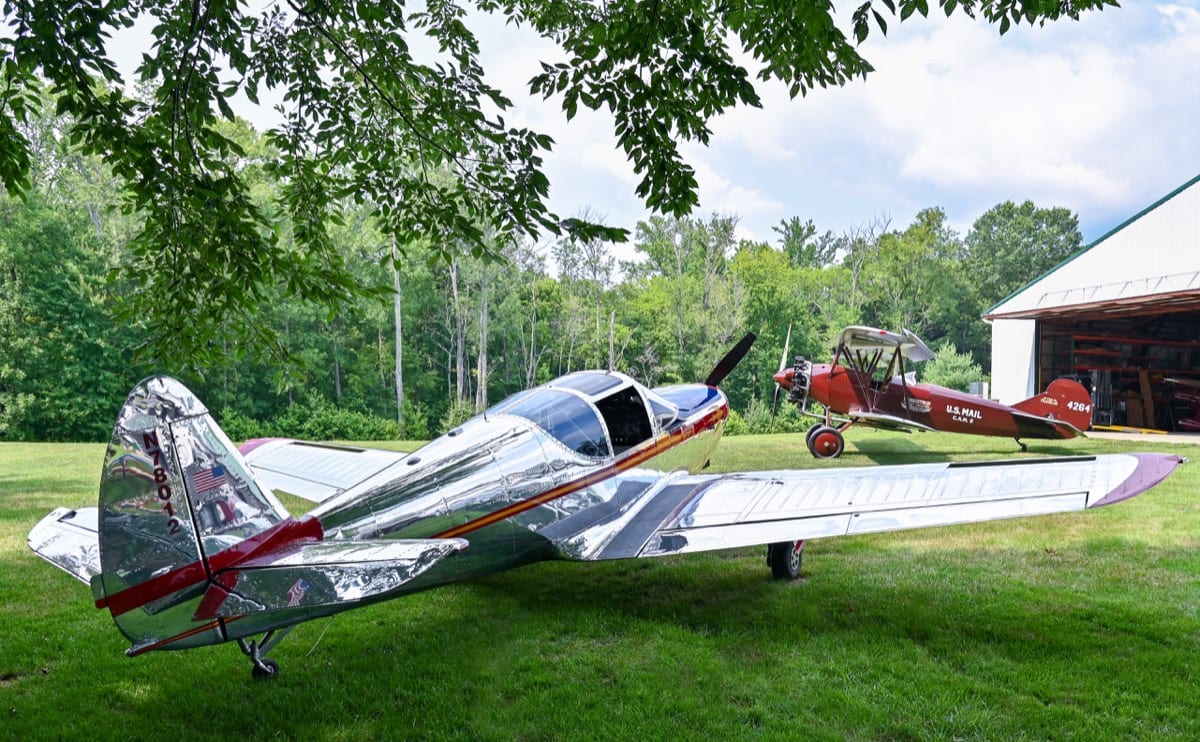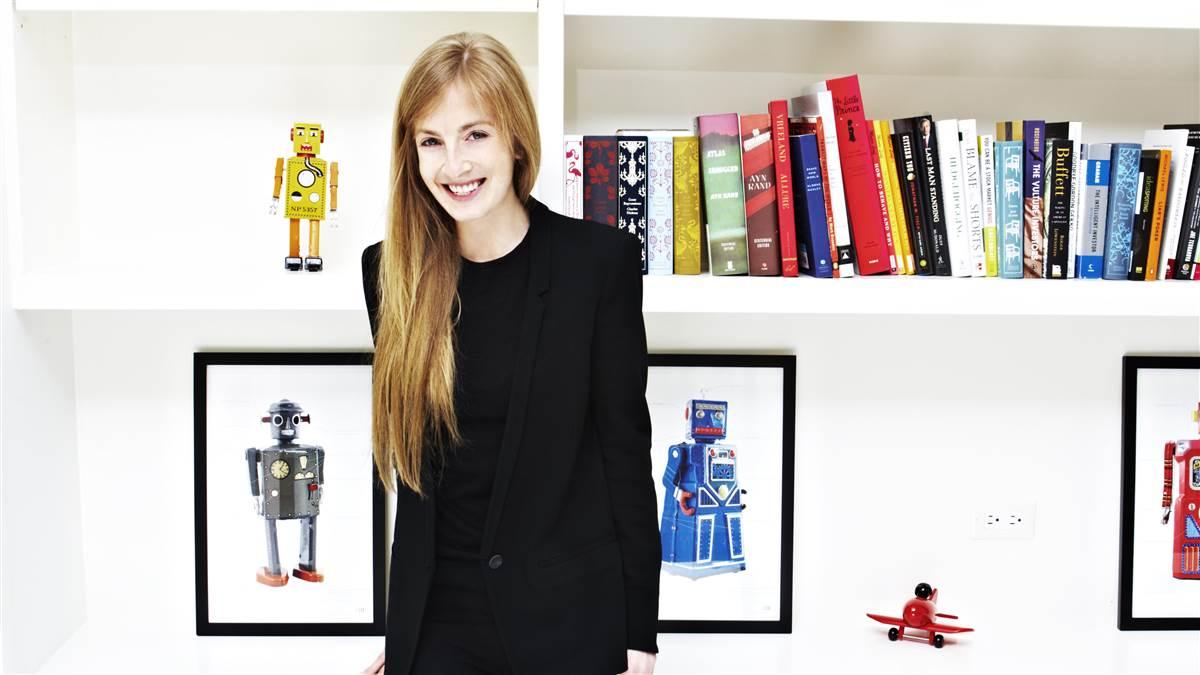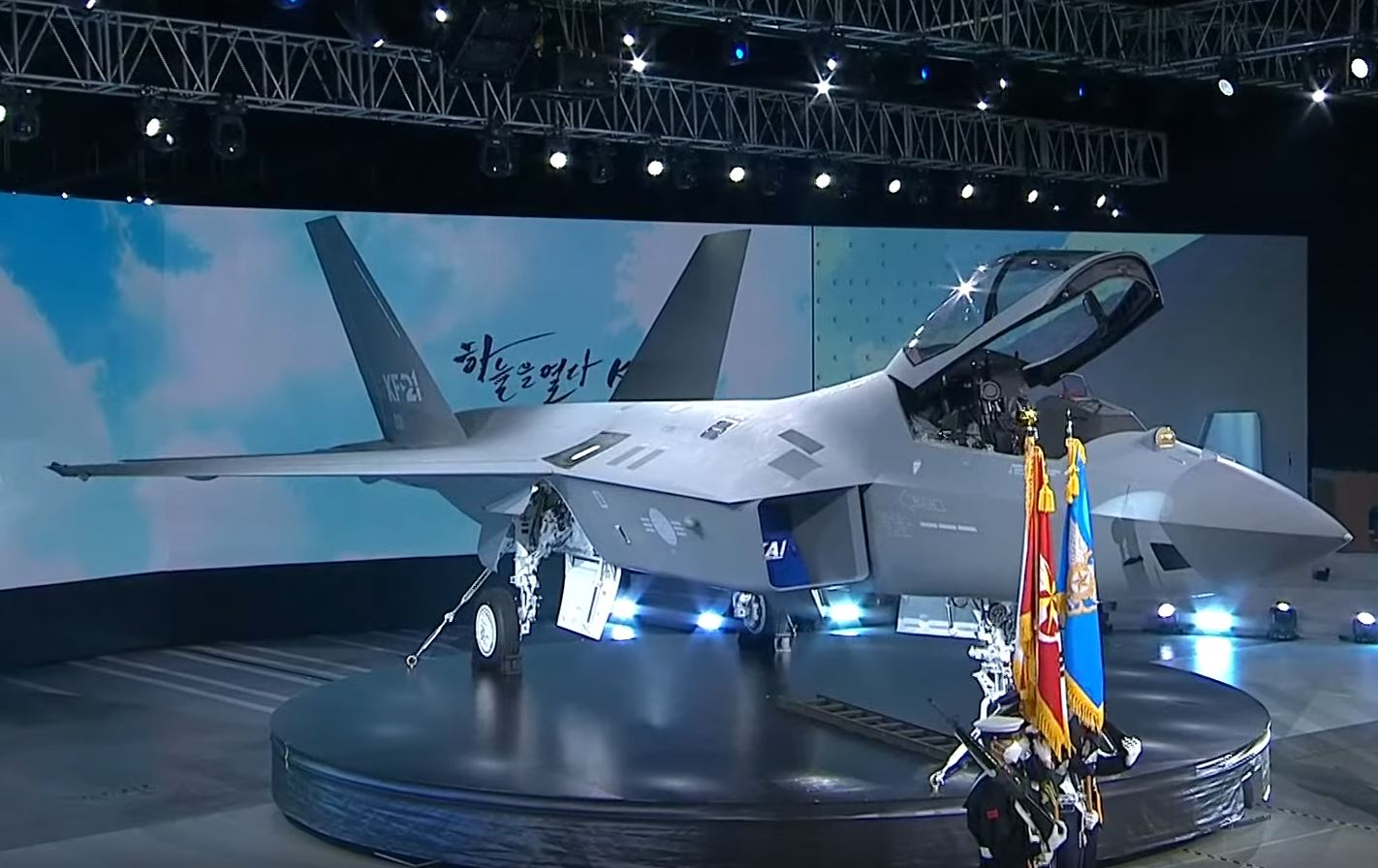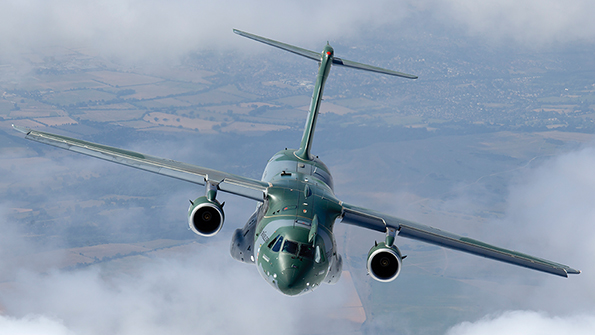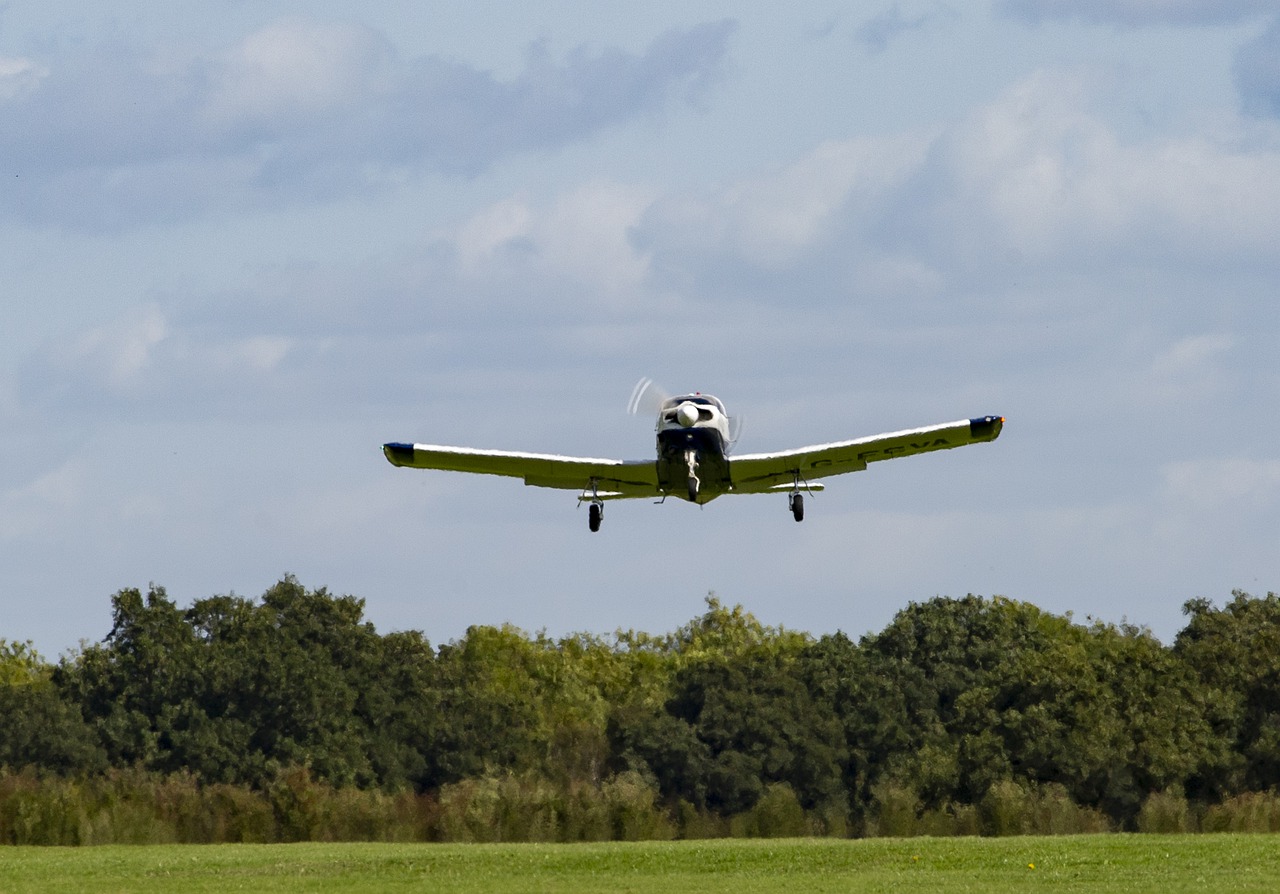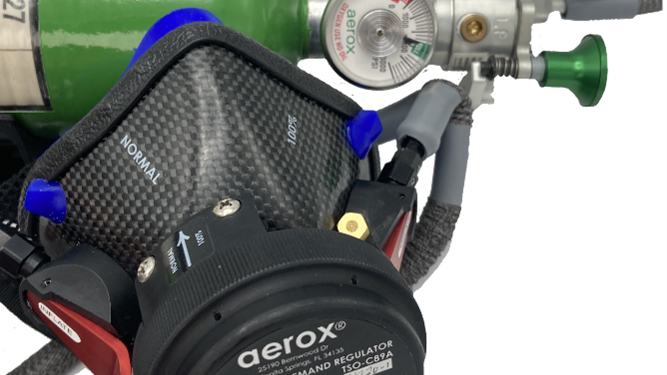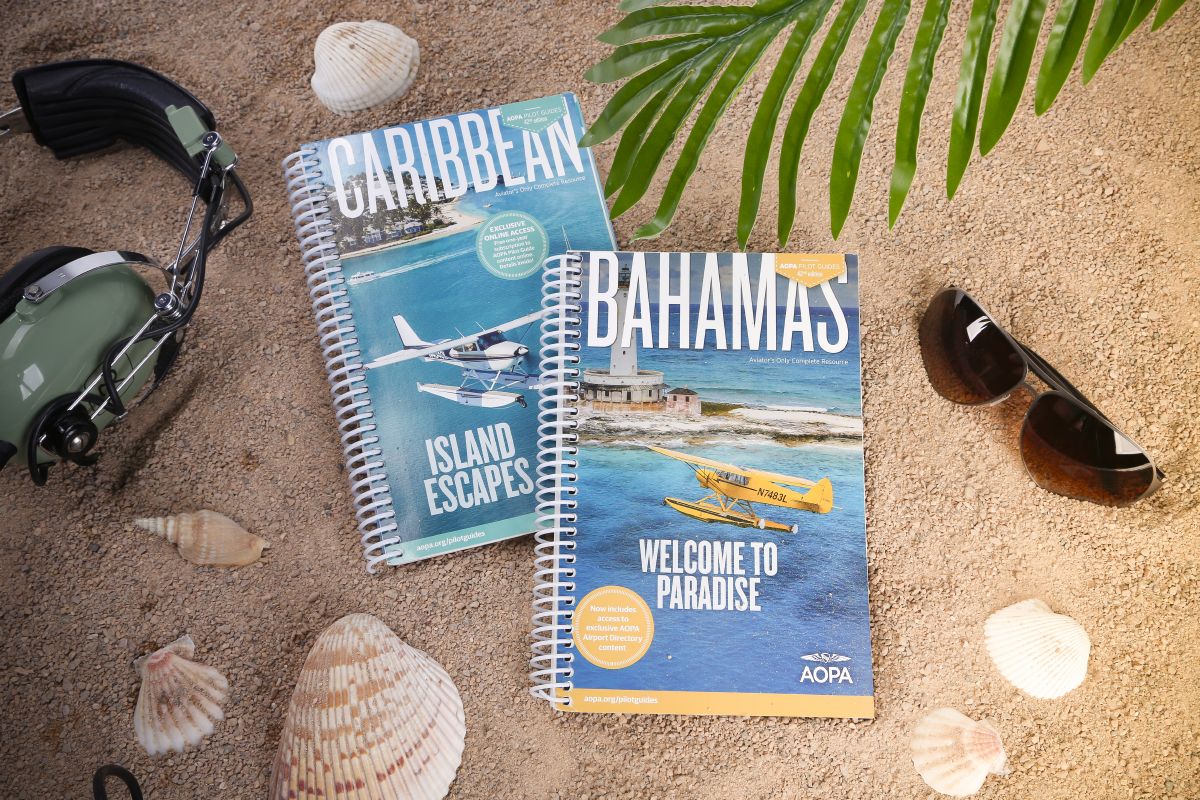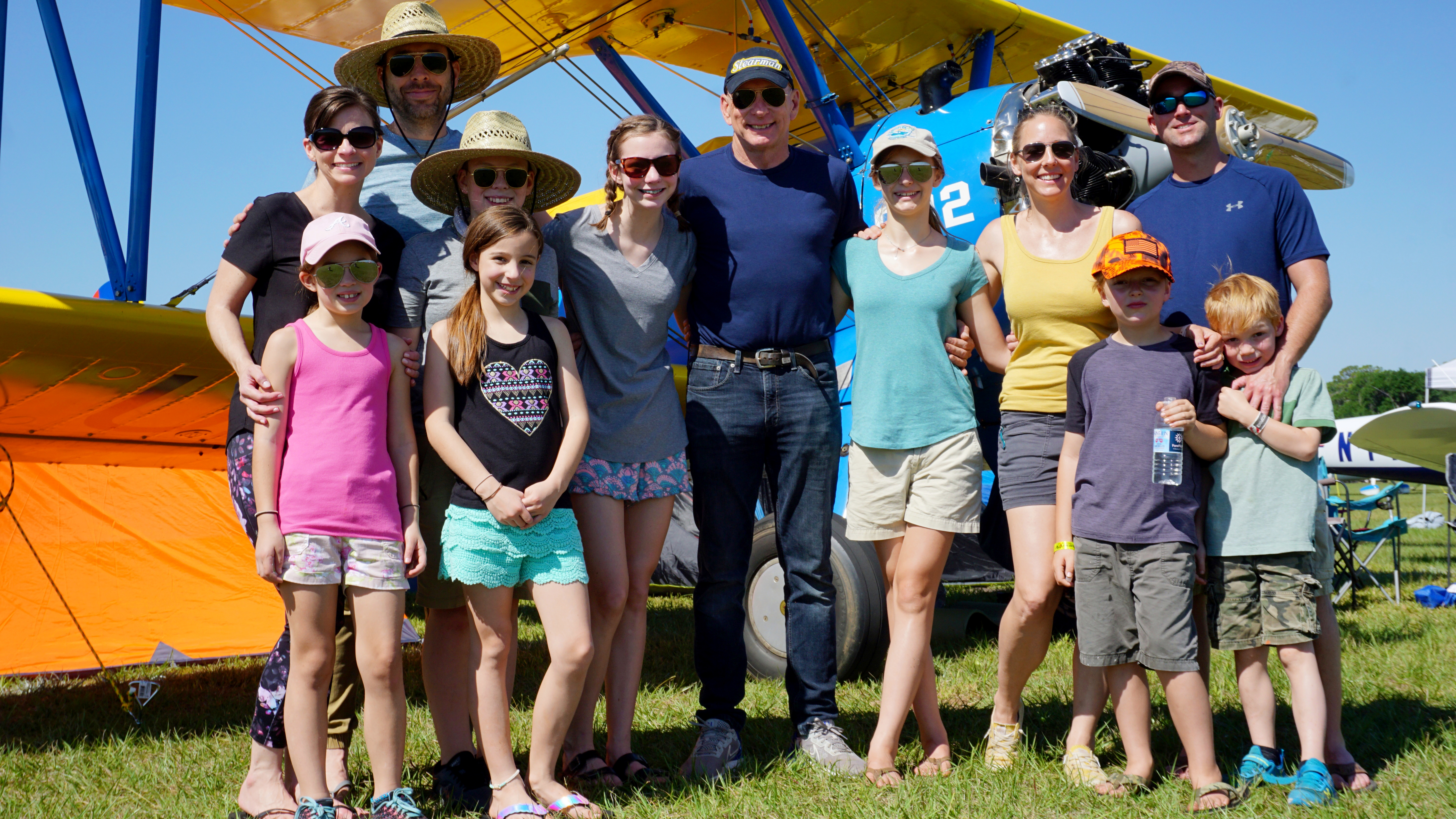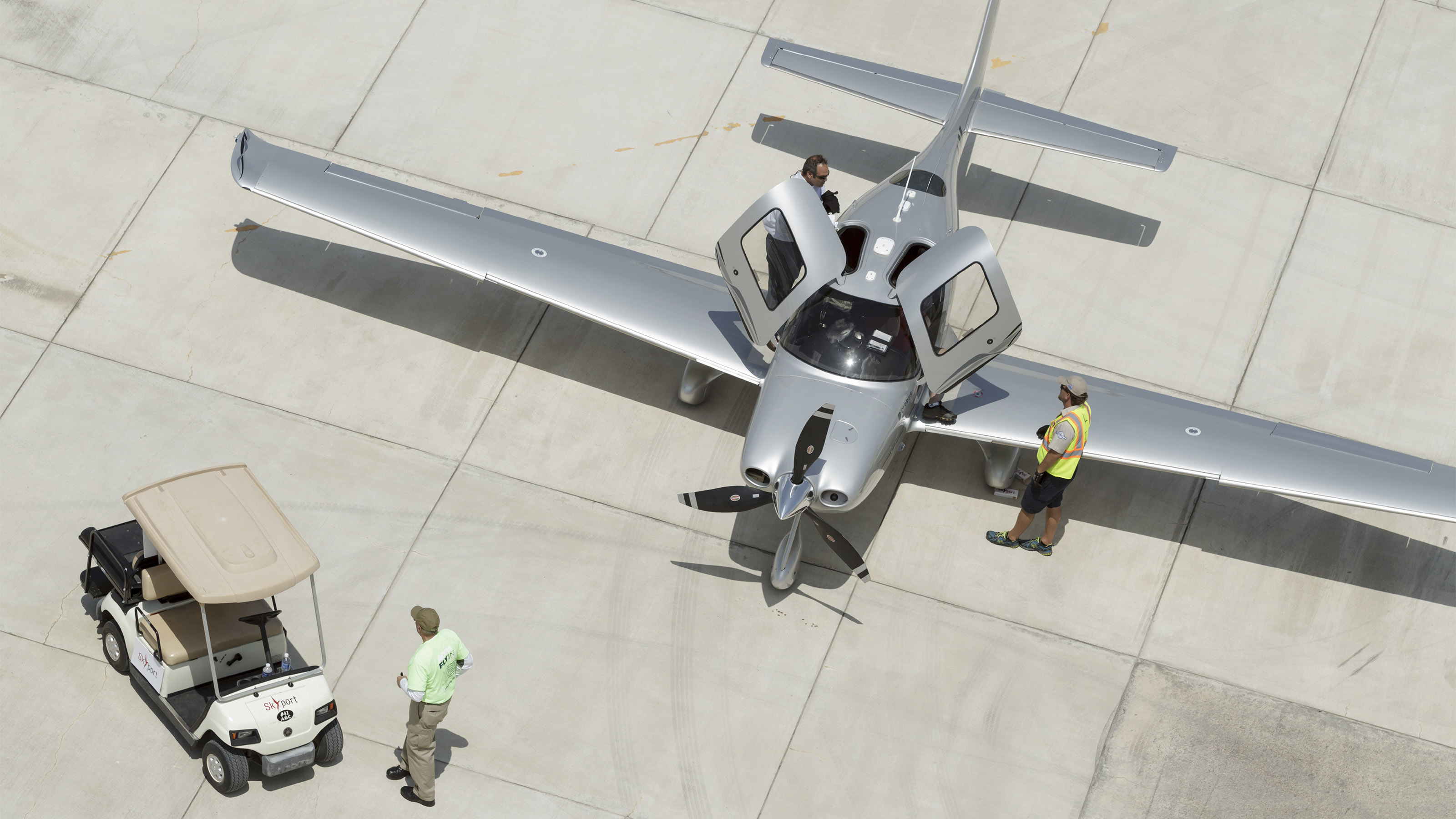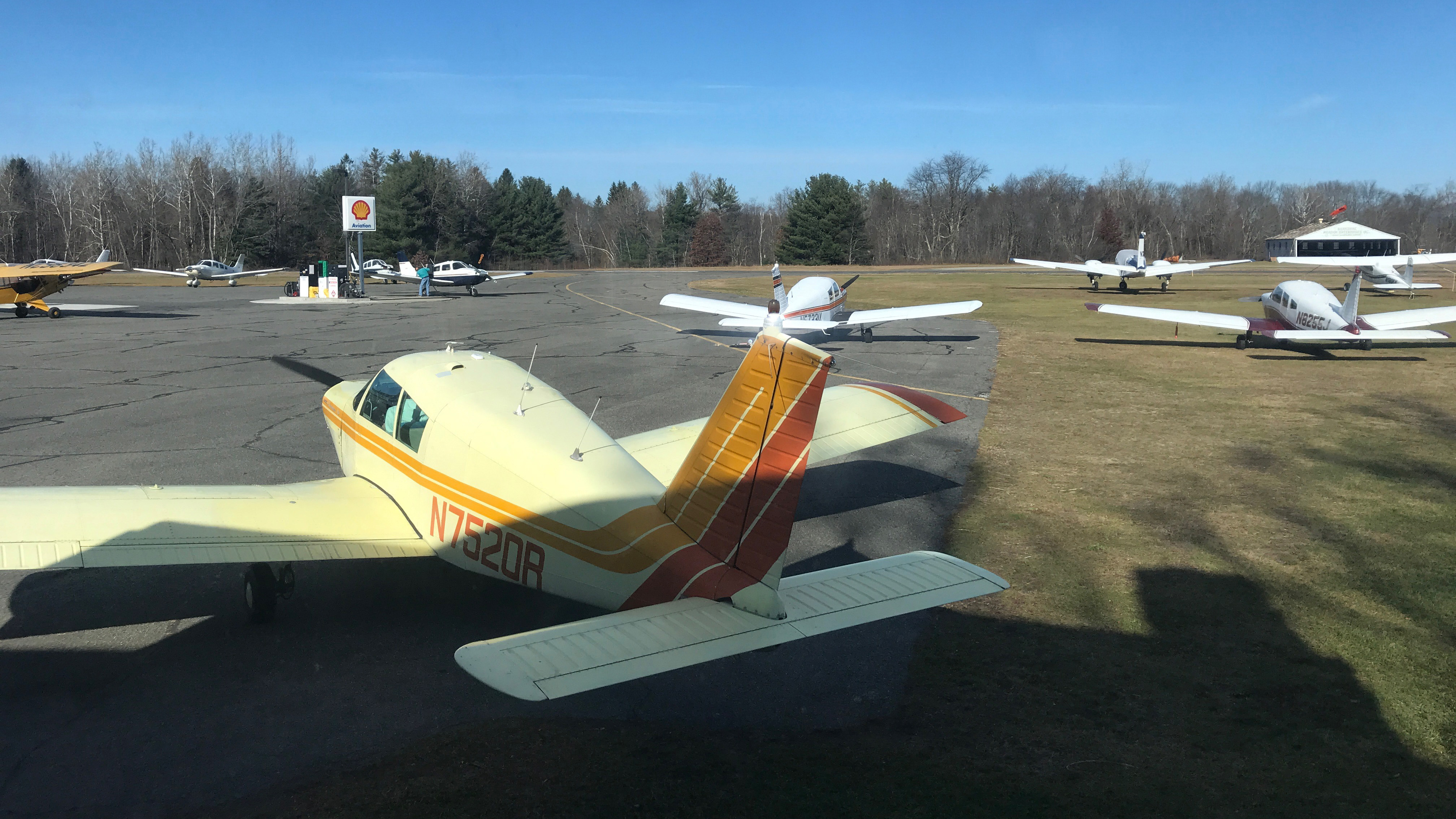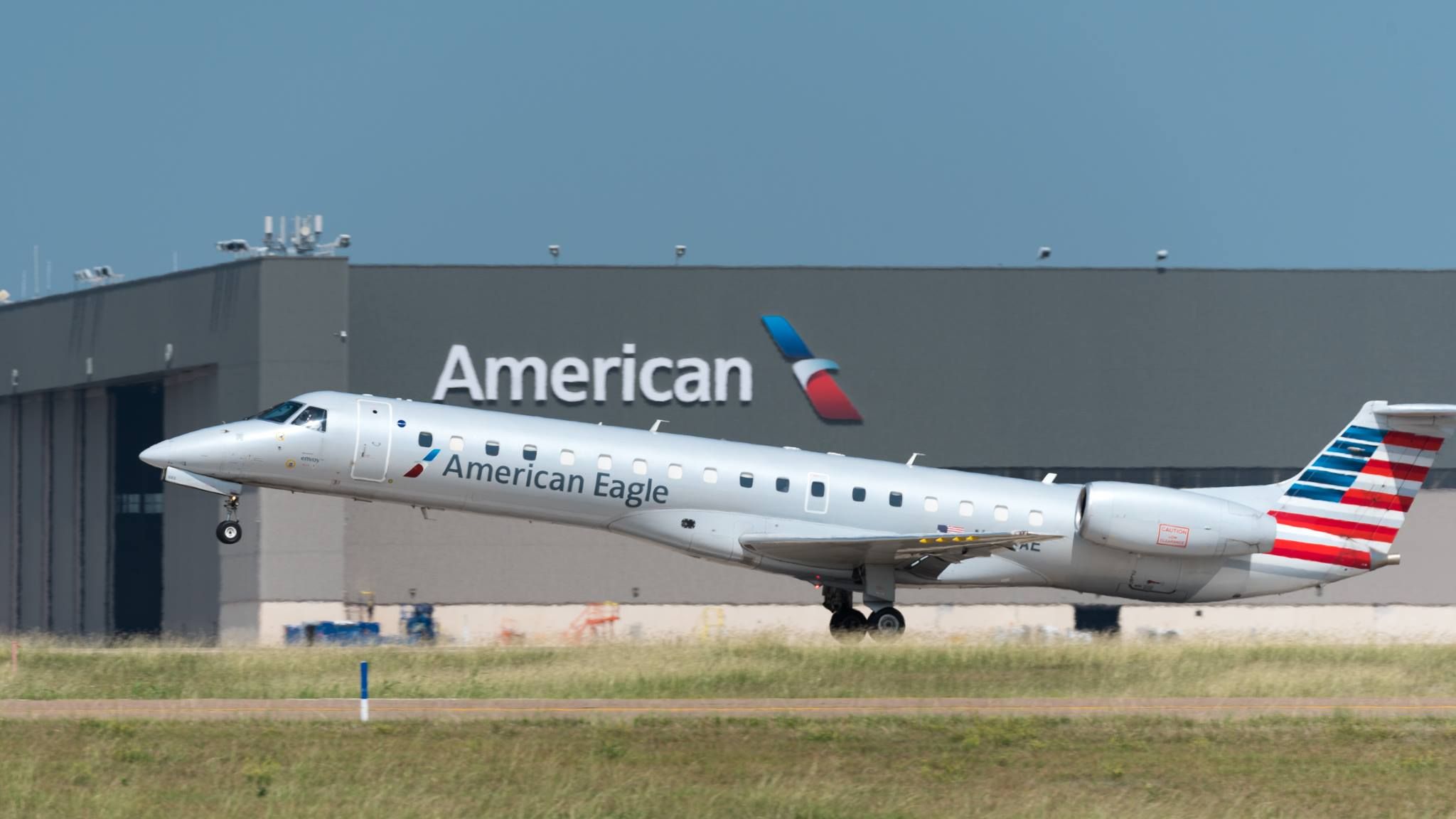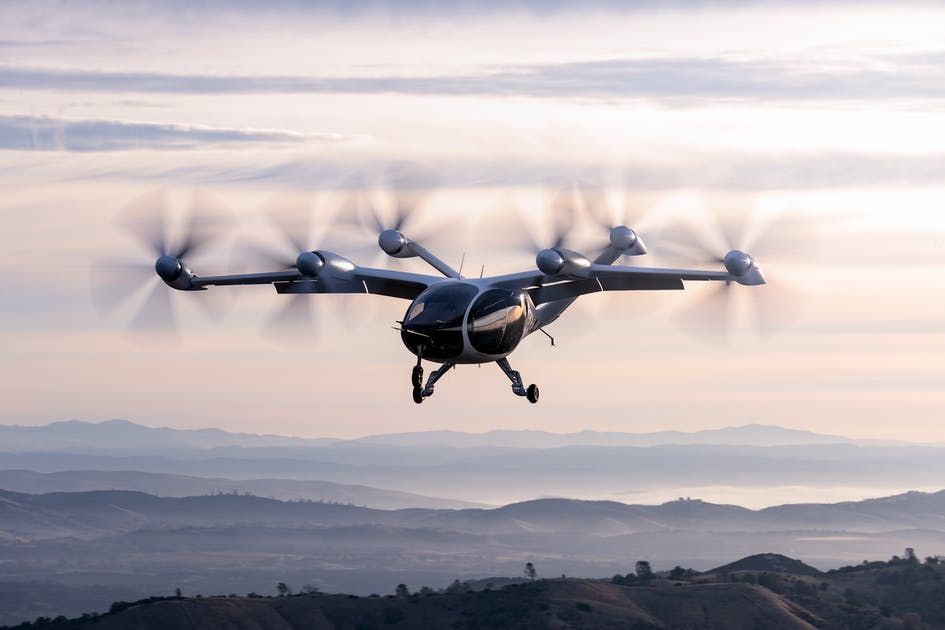De Havilland Aircraft of Canada Dash 8-400 (Bombardier Q400)
De Havilland Aircraft of Canada Dash 8-400 (Bombardier Q400) user+1@localho… Tue, 10/04/2022 - 21:17 The Dash 8-400 is a twin-engine turboprop airplane currently produced by Canadian manufacturer De Havilland Aircraft of Canada Ltd., itself...
The Dash 8-400 is a twin-engine turboprop airplane currently produced by Canadian manufacturer De Havilland Aircraft of Canada Ltd., itself a subsidiary of Canadian aerospace company Longview Aviation Capital Corp. Described on its Transport Canada type certificate data sheet (TCDS) as being a derivative of the DHC-8 Series 100 aircraft, this fourth series of the Dash 8 was first announced at the June 1987 Paris Air Show and launched eight years later in June 1995 at the same event. Its first flight took place on Jan. 31, 1998, from Toronto’s Downsview Airport, a flight that lasted 3 hr. and which was performed by an airframe registered as C-FJJA (serial no. 4001). Subsequently, three variants of the DHC-8 Series 400—the DHC-8-400, -401 and -402—were certified by Transport Canada on July 30, 1999, Aug. 3, 1999 and Aug. 4, 1999, respectively, with the first delivery of a Dash 8-400 taking place on Jan. 18, 2000, to SAS Commuter. Following that delivery, the first revenue flight by that operator—aboard a dual-class airplane configured with 72 seats—took place between Copenhagen and Poznan, Poland on Feb. 9, 2000. Improvements made by Bombardier to this series of DHC-8 airframes included increased-capacity and combination passenger/cargo variants, as well as what was marketed as the Q400 NextGen, an upgrade that was launched in March 2008 and first delivered on May 11, 2009, to Norwegian regional airline Wideroe.
Bombardier announced on Nov. 8, 2018, that the Dash 8 program—which, in addition to the Dash 8-400, includes the 100, 200 and 300 Series variants—would be sold to Longview Aviation Capital Corp. In addition to purchasing the Dash 8 program from Bombardier, Longview is also the parent company of Viking Air Ltd., which, in 2006, acquired the type certificates and manufacturing rights to all out-of-production de Havilland Canada aircraft—including the DHC-1 Chipmunk, DHC-2 Beaver, DHC-3 Otter, DHC-4 Caribou, DHC-5 Buffalo and DHC-7 (Dash 7)—as well as producing an upgraded variant of the DHC-6 Twin Otter dubbed the Twin Otter Series 400. Following the sale—which Bombardier noted would generate “gross proceeds of approximately $300 million” and included the assets, intellectual property and type certificates of the Dash 8 program—Longview noted that they would “become North America’s largest commercial turboprop aircraft manufacturer.” The sale of the Dash 8 program also represented the end of Bombardier’s involvement in the regional turboprop market, which the company entered in 1992 following its acquisition of de Havilland Canada from Boeing. Since 2008, the variants of the Q400 series were the only Dash 8 airframes produced. The type certificate for all variants of the DHC-8 was transferred from Bombardier, Inc. to De Havilland Aircraft of Canada Ltd. on June 1, 2019, with the sale of the program also closing that month.
Cabin
In terms of passenger accommodations, the DHC-8-400, -401 and -402 are certified to maximum passenger capacities of 68, 70 and 90, respectively, in addition to the two required pilots and two required flight attendants. The current production variant of the type is the -402, a variant that can be configured in a 74-seat dual-class configuration, an 82-seat single-class configuration and a 90-seat “extra-capacity” configuration. The 74-seat dual-class configuration includes eight business-class seats and 66 main-cabin seats, while the single-class and extra-capacity accommodations are based on a single-class configuration. In a fuselage that has a maximum diameter of 8 ft. 10 in., the single-class configuration is advertised as having a seat pitch of 30 in., while the extra-capacity configuration reduces that figure to 28 in. In the dual-class configuration, the main-cabin seats retain the 30-in. pitch noted above, while the premium-class seats increase it to 36 in. When configured in a passenger-only layout, the cabin has a volume of 2,740 ft.3, with another 411 ft.3 available for cargo.
Promoted as being “the world’s only commercial turboprop capable of carrying 90 passengers,” the 90-seat extra-capacity configuration was launched by Bombardier on Feb. 17, 2016, with its seat costs marketed as being 15% less than the “previous standard” of the airframe. The company further noted that when equipped with 90 seats, the airframe “is ideally suited to markets in growing economies and low-cost business models,” markets “where both capacity and seat-mile costs are key.” The delivery of the first 90-seat Dash 8-400, to Indian low-cost carrier SpiceJet, was announced by Bombardier on Sept. 21, 2018, following a September 2017 order from that carrier. Prior to the introduction of the 90-seat configuration option, Bombardier developed an 86-seat configuration that removed the forward cargo hold used by some operators for excess cabin baggage and crew luggage, with the first delivery of an airframe configured with 86 seats occurring in August 2014 to Thai low-cost carrier Nok Air.
Additional features of the passenger-only Dash 8-400 cabin include aspects that improve the boarding process, the amount of overhead storage space available, the interior outfitting, the cabin noise level and the presence of a “true business class.” The “true business class” option allows the Dash 8-400 to be promoted as the only turboprop in the market to offer such accommodations, with the airframe able to be configured with three-abreast seating in business class, as opposed to the four-abreast seating available in the main cabin. The first dual-class configured Dash 8-400 was delivered to Ethiopian Airlines in 2012, with the configuration at the time of delivery including seven business-class seats and 60 economy-class seats. Passengers can board the airplane through doors that are located forward and aft, a feature that, in the turboprop market, is also noted as being unique. Supplementing this configuration allowing passengers to board at the forward and aft portions of the cabin is the fact that the airplane is also capable of using airport jetways.
Inside the cabin, the overhead bins are promoted as having the space to “easily accommodate 22 X 16 X 10.5-in. roller bags,” with stowage space available for 52 bags. Passenger-comfort features of the Dash 8-400 include “large windows that maximize natural light and improved LED lighting,” with the latter incorporating “sidewall and ceiling-wash LED cool lighting.” Furthermore, the noise level in the cabin is reduced by the Active Noise and Vibration Suppression system, which reduces noise levels to a point “lower than those of some jets.” An available option that further enhances the passenger experience is an inflight entertainment system that “allows passengers to access content on their personal devices.”
Although the production of new airframes was suspended at the time, several announcements regarding the Dash 8-400 were made in July 2022 at the Farnborough International Airshow, announcements that included improvements to the cabin. De Havilland notes that those improvements would supplement existing features that were introduced when the airframe entered service—such as the Active Noise and Vibration Suppression (ANVS) system—as well as subsequent upgrades such as the light-emitting diode (LED) lights, increased-size overhead bins and a window design that is new. Promoted as improving the flexibility and functionality of the cabin, the improvements introduced at Farnborough in 2022 were divided into three categories—connectivity and entertainment, operational enhancements and passenger comfort—and include an “extension solution” for the overhead bins, interior décor that is improved, in-seat power, pictorial illuminated signage, satellite-based internet connectivity and an in-flight entertainment (IFE) system that is wireless.
The ”connectivity and entertainment” improvements include the USB in-seat power, internet connectivity that is satellite based and wireless IFE, with the “benefits and features” of the latter including the cost and the ease with which it can be implemented, as well as allowing operators to provide passengers with wireless access on their electronic devices. Furthermore, because it requires only one line-replaceable unit, the maintenance and weight are lower in comparison to seat-back IFE systems, with that unit able to be “installed in the overhead bins” and receiving power from the airplane or batteries.
Another connectivity and entertainment improvement, USB in-seat power—which is compatible with any type of seat—is noted as being an “add-on to seats” which does not impact “existing seat certification.” Noted as having no effect on the leg room of passengers, the charging ports able to be “installed and removed” with ease when required “for maintenance or replacement.” For most seats in the cabin, the USB charging port is found “on the aft side of the seat bench below the center arm rest and attached to the aft tube cross member.” However, seats located in the front row will have the charging ports “attached to the forward cross bar below the center arm rest.”
Internet connectivity that is satellite based can be installed as part of the cabin upgrade, with that connectivity provided by SpaceX’s Starlink. The agreement between the Canadian manufacturer and Starlink is noted by De Havilland as being the first such agreement, with the features of the Starlink-provided broadband internet including that is low latency and high speed, while also providing passenger internet that is unavailable “from any other” air-to-ground or satellite system. Also described as giving passengers in-flight Wi-Fi “that is equivalent to at-home internet,” the hardware that comprises the system includes the necessary wiring, as well as an antenna, power-supply unit and wireless access point for the Wi-Fi. The antenna’s “lightweight and aerodynamic form factor” is promoted as allowing equipped airplanes to operate more sustainably, with the fuel savings being enhanced in comparison to “legacy systems.”
The cabin enhancements announced by De Havilland also include passenger-comfort features such as overhead bins that are extended, an upgrade that can also be installed on “earlier models” of the airplane. Marketed as being a “cost efficient and environmentally friendly solution,” the modifications made to the overhead bins—which including the replacement of the actuators, doors and latches—boost the volume, with the improved bins able to hold 22-in. roller bags. ATR states that one benefit of carrying those bags in the cabin is that there is a larger amount of cargo compartment space that is available. Another benefit of the enhanced space found in the overhead bins is the potential to eliminate the ramp checking of luggage, which is described as reducing the “ground handling cost[s]” of operators. An additional passenger comfort improvement that can be made involves the décor, with the materials used upgraded to “soft” ones on the bulkheads, carpets, dado panels and seat-dress covers. The pictorial illuminated signage available for the Dash 8-400’s cabin is described as providing emergency exit and lavatory signs that are “animated representation[s]” that “align with [the] signage found in airport facilities,” which has the benefit of making the selling and remarketing of airplanes easier thanks to the “eliminat[ion] [of] signage translations.”
In addition to those changes, the halogen bulbs and fluorescent tubes found in the passenger service units (PSU) of “earlier model” Dash 8-400s can be replaced with LED lighting. That improved lighting is described as “wash[ing] along [the] ceiling panel [and] under [the] bin door”—as well as illuminating the interior of the overhead bins “when the bin doors are open”— while also reducing maintenance costs.
Yet another available modification for the Dash 8-400’s cabin involves the configuration, with the pitch of the seats able to be modified without the need to make “changes to existing monuments.” Operators that elect to make this change to the cabin layout will have the alignment of the seat-designator labels and PSU panels updated to reflect the updated location of the passenger seats. Because that modification can raise the number of seats, it is marketed reducing the load factor necessary to break even and the unit costs. The airframe’s “forward baggage compartment and associated systems” can also be removed, the benefits of which include the installation of additional overhead bins and seating for passengers, allowing the cabin to be brighter and the forward seats to have additional space (“extra legroom for the first seat pairs on the right-hand side”). The airplane’s baggage door can also be converted to a “Type I emergency exit door”—with the Type II/III emergency door deactivated—while an Automatic Presentation Passenger Oxygen System (APPOS) can be installed. Alternatively known as a “drop-down oxygen system,” the APPOS incorporates chemical oxygen generators, and each mask has the ability to provide 22 min. of oxygen for a number of cabin layouts. Those layouts “include[e] “two flight attendants, two lavatory occupants and at least four children-in-arms.” Beyond ensuring regulatory compliance, the available drop-down oxygen system lowers operational costs by allowing equipped airplanes to fly the “shortest routes,” giving operators the ability operate “additional flight routes” and increasing revenue potential by allowing the operation of routes that would have otherwise been impossible.
Avionics
Flight crews operate the Dash 8-400 using a Thales avionics system that includes five displays, single or dual UNS-1E flight management system(s) provided by Universal Avionics and a traffic alert and collision-avoidance system (TCAS). Other avionics capabilities include coupled vertical navigation (VNAV), the ability to utilize satellite-based augmentation systems (SBAS) such as the wide area augmentation system (WAAS) to conduct localizer performance with vertical guidance (LPV) approaches—in addition to having the ability to perform required navigational performance authorization required (RNP AR) approaches—automatic dependent surveillance—broadcast (ADS-B) Out, an enhanced ground-proximity warning system (EGPWS) and an Aircraft Communications Addressing and Reporting System (ACARS). Also available is a Class 2 electronic flight bag, as well as a head-up guidance system.
Mission and Performance
At the time that it was launched, the Dash 8-400 had other turboprop-powered competitors that included the Dornier 328 and Saab 2000, both of which could deliver comparable performance. Those competing airframes are no longer in production, however, and with respect to passenger capacity, the closest current competition for the Dash 8-400 in the commercial turboprop market is Avions de Transport Regional’s (ATR) ATR 72-600, which has a maximum certified capacity—with certain modifications made—of 78 passengers. Although the ATR 72 is not promoted as offering a business class, ATR does note that it is able to accommodate 72 seats with a 29-in. pitch, while the 78-seat maximum capacity requires a 28-in. pitch. An additional commonality between these airframes is the ability to offer a passenger/cargo combination (combi) configuration, with the ATR 72 marketed as being able to carry 44 passengers and 6,830 lb. of cargo in that type of configuration. In spite of those similarities, the ATR 72 does not offer the ability to match the Dash 8-400’s 90-seat capacity or range, while other performance metrics—including takeoff and landing distances—maximum weights and cargo capacity are higher on the de Havilland-produced airplane.
|
Comparison: ATR42/72 and Dash-8-400 |
|||
|
Type Designation |
ATR 42-500 |
ATR 72-212A |
DHC-8-402 |
|
Commercial Designation |
ATR 42-600 |
ATR 72-600 |
Dash 8-400 |
|
Maximum Certified Passenger Capacity |
60 |
78 |
90 |
|
Maximum Range (nm) |
726 |
740 |
1,102 |
|
Engine |
Pratt & Whitney Canada |
||
|
PW127E PW127F PW127XT-M |
PW127F PW127M PW127N PW127XT-M |
PW150A |
|
|
Maximum Takeoff Weight (MTOW)(lb.) |
41,005 |
50,705 |
67,199 |
|
Wingspan |
80 ft. 7 in. |
88 ft. 9 in. |
93 ft. 3 in. |
|
Length |
74 ft. 5 in. |
89 ft. 1.5 in. |
107 ft. 9 in. |
|
Height |
24 ft. 11 in. |
25 ft. 1 in. |
27 ft. 5 in. |
With regard to the performance differences between the ATR 72 and Dash 8-400, the maximum operating limit speed (VMO) listed below for the latter is 36 kt. greater than the 250-kt. limitation in the FAA TCDS for the ATR 72-212A. In addition to having a higher VMO, the Dash 8-400’s capabilities at both high and low airspeeds were also promoted by Bombardier, with the former benefits in comparison to jets noted below. At “lower speeds,” the airplane was promoted as having “the same trip cost as competing turboprops,” while also being able to accommodate “up to 14 more seats.”
From a performance perspective, the Dash 8-400 is limited to a VMO of 286 kt. indicated airspeed (KIAS) between 18,000 and 20,000 ft., as well as a maximum-operating altitude of 25,000 ft. In addition to that airspeed limitation, this Dash 8 variant is promoted as having long-range, intermediate, high-speed and maximum cruise speeds of 300, 320, 340 and 360 kt., respectively. The 25,000-ft. operating limitation is supplemented by the fact that the airframe is capable of operating at airports up to 10,000 ft. in elevation. Beyond those certified limitations, Bombardier promoted the Q400 as being able to operate to an altitude of 27,000 ft. and from airports as high as 14,000 ft.
Based on an average passenger weight of 225 lb., the range of the higher maximum takeoff weight (MTOW) version of the airframe (67,199 lb.) is promoted as being 1,100 nm. Assuming an MTOW of 61,700 lb. and a 60,500-lb. maximum landing weight (MLW)—as well as assuming standard conditions and sea-level altitude—the Dash 8-400’s respective takeoff and landing distances are 4,265 ft. and 4,160 ft. At the higher MTOW—and with a 64,000-lb. MLW, standard conditions and sea-level altitude—those distances are increased to 4,675 ft. and 4,229 ft. Those performance capabilities are supplemented by the Dash 8-400’s ability to use runways with a slope of up to 4.6%—in addition to those which are unpaved—conduct steep approaches and operate in temperatures as low as -54C [-65F]. The airplane’s avionics, short-field performance, superior climb profile and “special operations capabilities”—the previously discussed ability to conduct RNP and steep approaches, as well as operate from gravel and narrow runways—are promoted as allowing it to “profitably operate out of the most challenging airports.” In comparison to conventional turboprop airplanes, the Dash 8-400’s airspeed is noted as being 30% faster, while its high-speed cruise speed is promoted as “plac[ing] [it] within minutes of jet schedules.”
Variants
|
Dash 8-400 Series |
|||
|
|
DHC-8-400 |
DHC-8-401 |
DHC-8-402 |
|
Maximum Certified Passenger Capacity |
68 |
70 |
90 |
|
Maximum Range (nm) |
1,102 |
||
|
Engines (2x) |
Pratt & Whitney Canada PW150A |
||
|
Maximum Takeoff Rating (shp) |
5,071 |
||
|
Maximum Takeoff Weight (MTOW) (lb.) |
61,700/67,199 |
||
|
Maximum Landing Weight (lb.) |
60,500/64,000 |
||
|
Fuel Capacity (usable) (gal./lb.) |
1,724/11,724 |
||
|
Wingspan |
93 ft. 3 in. |
||
|
Wing Area (ft.2) |
689 |
||
|
Length |
107 ft. 9 in. |
||
|
Height |
27 ft. 5 in. |
||
PW150A Engines
In keeping with the first three series of the DHC-8 type, the Dash 8-400 is powered by a pair of Pratt & Whitney Canada engines. Those engines are the PW150A variant that has a power rating at takeoff of 5,071 shp and is flat-rated to 22.4C (72.32F). Those engines power two Dowty Aerospace model R408/6-123-F/17 variable-pitch composite propeller blades that are electronically controlled and which have a nominal blade diameter of 13.5 ft. When compared to “conventional turboprops,” the combination of passenger capacity and speed are marketed as enabling the variants of the Dash 8-400 series to complete “at least one extra flight per day,” enabling the “generation of 30% more ASK (available seat kilometers).” When configured to carry 90 passengers, the airframe is further promoted as having per-seat costs on a 300-nm trip that are 20% lower than competing 76-seat turboprops, as well as a trip cost that is half that of a large single-aisle jet equipped with 170 seats.
Hydrogen-Electric Engine Program
De Havilland announced in December 2021 it had signed a memorandum of understanding with ZeroAvia—a start-up working on zero-emission propulsion technology—that will develop a program to line-fit and retrofit the Canadian manufacturer’s new and existing airplanes, respectively, with “hydrogen-electric propulsion.” The agreement gives De Havilland “options to purchase 50 ZeroAvia hydrogen-electric engines,” with the companies also collaborating on a “service bulletin for the Dash 8-400 type certificate” that will allow ZeroAvia’s hydrogen-electric engine to be available a “line-fit option for new aircraft,” in addition to “developing an OEM [original equipment manufacturer]-approved retrofit program for in-service aircraft.” At the time the program was announced, the planned propulsion unit for the Dash 8-400 was the ZeroAvia’s ZA2000 “2MW+ powertrain,” which is composed of “900-kW [kilowatt] modules.”
Dash 8-400 Design
In comparison to the DHC-8 Series 300, the Dash 8-400 represents a 23 ft. 6 in. stretch, with modifications also made to the ailerons and flaps, and the inner-wing configuration and main landing gear—“including [the] wheels and brakes”—being new. Systems that were improved on these variants of the DHC-8 include the avionics, electrical, environmental control, flight controls and hydraulics.
Dash 8-400 Passenger-Cargo Combi Configuration
Beyond the passenger-only configurations, this Dash 8 variant also is available in a combi configuration that reduces the amount of space available for passenger seating, while increasing the space for cargo. Promoted as combining “the revenue flexibility of a large cargo hold with the speed and passenger comfort of a modern regional aircraft,” this configuration option for the Dash 8-400—which was previously marketed as the Q400 cargo-combi aircraft—was “unveiled” at the 2014 Farnborough International Airshow. Subsequently, the delivery of the first airframe in this configuration—to Japanese regional carrier Ryukyu Air Commuter, part of the Japan Airlines Group—was announced on Dec. 31, 2015. As a result of the increased cargo space available with this configuration, the passenger capacity decreased to 50 with seats that have a 32-in. pitch. However, when that pitch is decreased to 29 in., the passenger capacity is able to be increased to 58, with the maximum capacity of a cargo-combi configured airplane noted as being 68. In comparison to the passenger cabin volume noted above, the cargo-combi configuration reduces that volume to “up to 2,277 ft.3,” while the amount of space available for cargo is increased to 1,150 ft.3. Beyond increasing the space available in the cabin for cargo, the maximum weight of cargo that can be accommodated is similarly increased, with that limitation being more than doubled according to Bombardier’s marketing documents. While the maximum cargo weight of a passenger-only configured Dash 8-400 is 3,800 lb., that limit is increased to 9,000 lb. with the combi configuration. An additional feature of the Dash 8-400 cargo-combi airplane is the Class-C cargo compartment.
Dash 8-400 Simplified Package Freighter
In addition to the passenger-cargo combi configuration that available to the Dash 8-400, a full-freighter configuration of the airframe is also available, a layout that is “applicable to all current passenger configurations” and which was “approved by Transport Canada to support [the] airlift of freight during the Covid-19 pandemic.” Announced by De Havilland on April 23, 2020, and launched by Kenyan operator 748 Air Services, the service bulletins for the Simplified Package Freighter replaces the passenger seats and seat-track covers, while installing cargo nets that have adjustable straps on the seat tracks. Each of the 17 cargo nets has a capacity 750 lb. and a volume of 33 ft.3, while the replacement of the seats with those 17 nets results in the Dash 8-400’s cabin having a potential payload of “up to” 17,960 lb.—divided between the cargo area and passenger cabin—and total cargo volume that can reach 1,150 ft.3 The first operator of the Simplified Package Freighter was Canadian regional airline Jazz Aviation, which ordered the service bulletin for the conversion and conversion kits for 13 Dash 8-400 airframes. Operated under the Air Canada Express brand, converted airplanes operated by Jazz were meant to serve short and medium-range markets.
Dash 8-400 Cargo Conversions
On July 18, 2022, De Havilland announced three possible cargo conversion options for the Dash 8-400—the Freighter with Large Cargo Door (F-LCD), Package Freighter (PF) and Quick Change (QC)—with those cargo conversions being “retrofits” that are meant to keep the airframe “relevant” during the pause in production that began in 2021. The latter cargo conversion option, the Dash 8-400 QC, “essentially formalizes the ‘simplified package freighter’” that was introduced in April 2020 and is described by the airframe manufacturer as “a revenue-expansion model” that provides operators with the ability to alter the cabin configuration from all-cargo to all-passenger in a relatively short amount of time. Further promoted as allowing operators to better match the needs of the market, the Dash 8-400 QC option goes beyond removing the passenger seats and installing cargo nets to also incorporate a cabin smoke-detection system that is necessary to convert the cabin “into a Class E compartment.” Additionally, because there is no need to for an attendant in the cabin, “large nets can be installed across the entire fuselage,” allowing for the cargo capacity to be increased. According to De Havilland documentation, the Dash 8-400 QC can accommodate a cargo of 20,310 lb. and has a 1,867-ft.3 cargo volume, while being able to operate to a still-air range of 1,600 nm, assuming a standard en route temperature, 100-nm diversion, holding for 45 min. at 15,000 ft., a “5% flight fuel contingency” and a cargo density of 6 lb./ft.3
In contrast to the ability of Dash 8-400 QC to be reconfigured between passenger and cargo configurations, the Dash 8-400 PF is a “dedicated” freighter that can carry a cargo weight of 22,500 lb. and has an increased cargo volume of 2,777 ft.3 Although the Package Freighter configuration option increases both the cargo weight and volume in comparison to the Dash 8-400 QC, the airframe’s range—based on the same criteria as the QC—is a slightly lower 1,555 nm. Noted as “allow[ing] bulk loading of various sizes of cargo, such as e-commerce packages,” De Havilland describes this configuration as being “ideal” for that transportation of such cargo, with that cargo loaded through the “primary cargo access door” located in the same location as the “aft baggage compartment door.” Beyond the aft baggage door, there are four other access doors—forward and aft doors on both sides of the fuselage—that can be utilized to load and unload cargo, while in the cabin’s new panels replace the “existing cabin sidewalls.” The cabin itself is divided into “nine ‘distinct’ loading zines,” and restraint and tie-down is provided by “eight radial spider nets.” As with the Dash 8-400 QC, the Dash 8-400 PF also has a Class E cargo compartment, with options that include a cargo-loading system that enables the airframe to carry cargo that is palletized.
The Dash 8-400 cargo conversion that requires the greatest changes to the existing airframe is designated the Dash 8-400 F-LCD, which is a Dash 8-400 PF that is outfitted with a cargo-loading system and large cargo door (LCD). It is the combination of those two features that allows this conversion option “to provide a containerized cargo model” that allows the airframe to carry either containers or unit load device (ULD) pallets. Located on the “forward right side” of the airframe, the LCD measures 109 X 69 in. and allows the Dash 8-400 F-LCD to carry several different types of containers—including LD1, LD2, LD3 and LD4—with as many as eight LD3 containers able to be accommodated. According to De Havilland, the benefits of the F-LCD’s ability to carry containers include enabling “interline transfer of containers from other aircraft in an operator’s network,” with this version of the Dash 8-400 marketed as being well suited “for hub-and-spoke network carriers as well as major logistics operators.” When carrying eight LD3 containers and “miscellaneous cargo,” the range of the F-LCD is, at 1,640 nm, the highest of the three cargo conversion options. While the F-LCD retains a number of same characteristics as the Dash 8-400 PF—among them the 2,777-ft.3 cargo volume and a Class E cargo compartment—the cargo weight of the F-LCD is actually decreased to 21,400 lb.
On July 20, 2022, just days after those conversion kits were launched, it was announced that Ethiopian Airlines had come to a “tentative agreement with De Havilland Canada” covering conversion kits for two Dash 8-400 F-LCD, with options for a further two conversion kits. If that tentative agreement becomes a “definitive and binding agreement,” the conversion work would be performed by “Ethiopian’s in-house maintenance operation,” a facility that is an existing “De Havilland Canada Authorized Service Facility.”
Dash 8-400 Upgrades
Supplementing the numerous cabin upgrades that were discussed above, the Dash 8-400’s design weights can also be raised, which De Havilland markets as enhancing the airplane’s “operational capability” to carry additional bags, cargo, fuel and passengers. The airframe manufacturer notes that “new weight categories” are in development that will allow the airframe to accommodate additional seats and “weight capacity for checked baggage,” greater “operating range” and provide for a passenger experience that is enhanced. Among the weight improvements available is a 3,000 lb. increase in payload—maximum zero fuel weight—while, when carrying the same payload, the range can be increased by 310 nm. When operating a “return mission” of 260 nm “when tankering fuel,” the payload is improved by 10% from 18,570 lb. to 20,460 lb. Beyond the improvements to the Dash 8-400’s payload capability, the MTOW is raised by 2,000 lb., while an available baggage compartment weight increase of 650 lb. is also in development. A further benefit of the increased weights is that operators can reduce fuel costs through fuel tankering that is improved, with the “improved fuel tankering” reducing fuel costs during operations to and from airports “where refueling may be prohibitive.” The standard categories of weight increases are supplemented by “customized weight increases” that can also be provided in order to accommodate an operator’s specific requirements.
Environmental Performance: Emissions, Fuel Burn and Noise
Beyond its performance and revenue-generating capabilities, Bombardier also promoted the Dash 8-400 as having “the lowest fuel consumption per passenger of any turboprop.” On a 300-nm flight, it produces—on a per-seat basis—8% less carbon dioxide (CO2) emissions than competing turboprops. When compared to in-production 70-seat regional jets (RJ) and out-of-production 50-seat RJs, the reduction in CO2 emissions is touted as being greater than 35% and 45%, respectively, on a 500-nm flight. Specific to short-haul routes where the Dash 8-400 has replaced an RJ of similar capacity, the de Havilland turboprop “burns 30% less fuel and produces 30% lower emissions,” a reduction that is equal to 4,000 metric tons of CO2 per airplane per year. Another way in which the Dash 8-400 improves on the environmental performance of in-production 70-seat RJs is with respect to noise, with the noise footprint of the airplane touted as being “up to” 2.5 times less. Furthermore, the community noise created by the PW150A engines is noted as being “significantly reduced, making [the airframe] ideal for city-center airports.” The airframe’s margin to the Stage 4 noise standard is 15.3 effective perceived noise level in decibels (EPNdB), with a benefit of the Dowty Aerospace propellers’ “lower rpm” being that they “generate more power with less noise.”
Program Status/Operators
Longview’s press release announcing the purchase of the Dash 8 program stated that the company would “continue to independently operate the program at the original de Havilland manufacturing site located at” Toronto Downsview, a facility that was sold by Bombardier in May 2018 for $635 million. However, on Feb. 17, 2021, De Havilland stated that once the “current confirmed orders” were produced at the Downsview facility, no further Dash 8-400s would be produced at that location and production would be paused at that time. The last Dash 8-400 produced at the Toronto facility, Serial No. 4633, was delivered to Canadian company Conair Group, ahead conversion to an aerial firefighting platform for French government agency Securite Civile. At the time the production pause was announced, the company stated that it was their intention to begin deliveries of new airplanes “at the earliest possible time, subject to market demand.”
Following the end of production at Toronto Downsview and the pause in Dash 8-400 production, De Havilland announced on Sept. 21, 2022, that the company was planning to build new facilities—designated De Havilland Field—to the east of Calgary, Alberta, for manufacturing and other functions. That location, which in addition to having an assembly facility that is described as being “state of the art, will also feature a “maintenance, repair and overhaul center” and runway. Following the cessation of production at Downsview, the Alberta facility would represent the new production location for the Dash 8-400, with the airframe manufacturer stating at the time of the De Havilland Field announcement that it was “working toward bringing the [airframe] back into production.” Around the time that the three cargo conversion options for this Dash 8 variant were unveiled, the company also stated that a decision on the resumption of Dash 8-400 production will occur “somewhere between 2025 and 2027.”
Although they were announced concurrently, the three cargo conversion options for the Dash 8-400 that were announced in July 2022 are expected to become available at different times, with the Dash 8-400 QC expected to be first to be ready in the fourth quarter of 2022. The Dash 8-400 PF was expected to become available approximately a year after it was announced, while the Dash 8-400 F-LCD will be the last of the three cargo conversion options to be ready to enter service. Because that latter conversion option installs an LCD that must be certified, the “projected time in service” is anticipated to be in the latter half of 2024.
References
- AWIN Article Archives
- ATR, Bombardier and De Havilland Aircraft of Canada Ltd. Commercial Materials
- FAA TCDS (ATR 72-212A and DHC-8 Series 400) and Transport Canada TCDS (DHC-8 Series 400 and PW150A)




 admin
admin 












